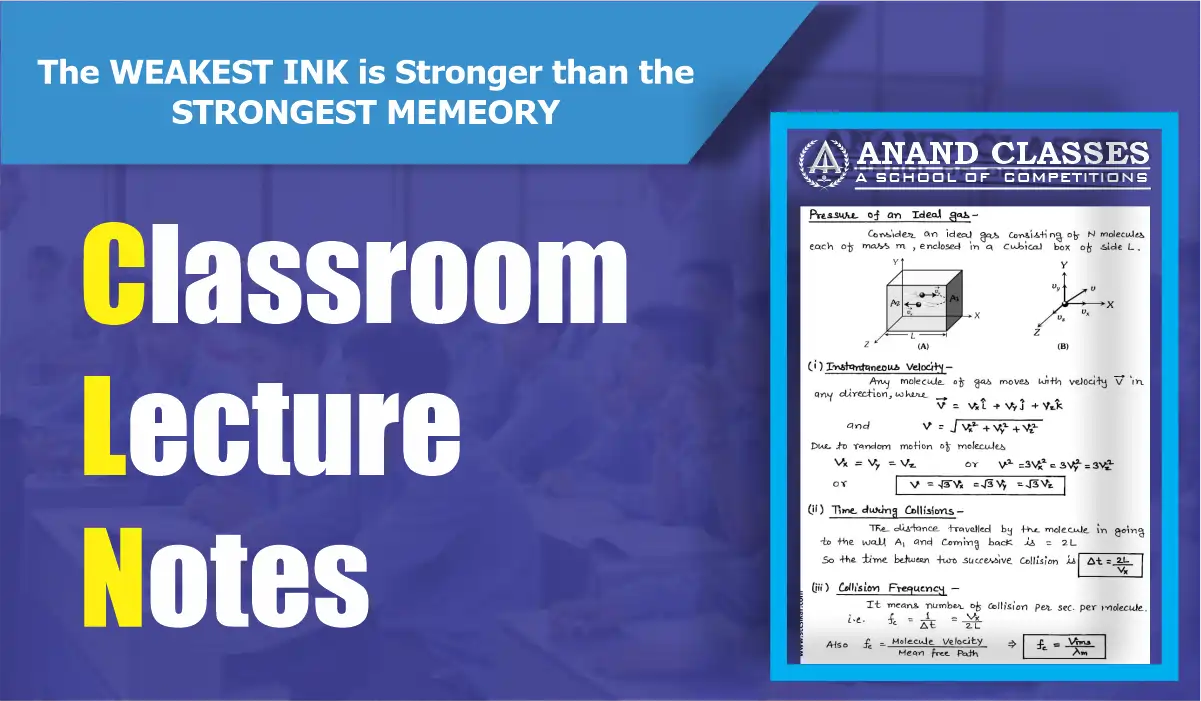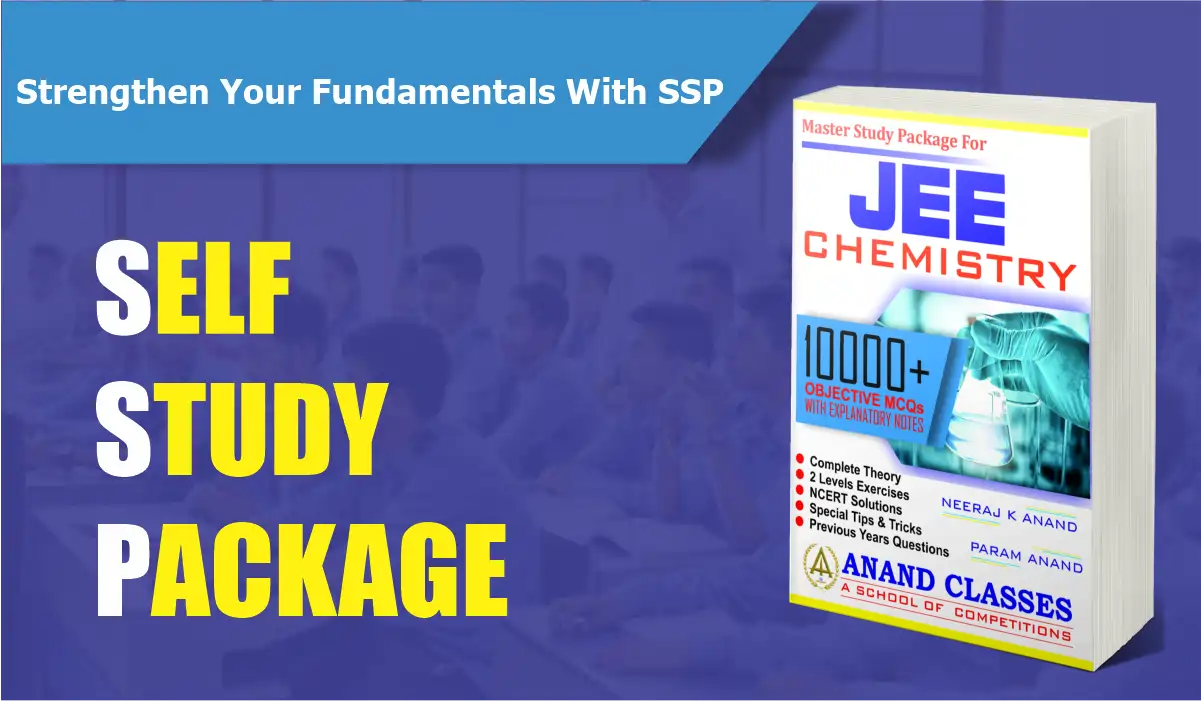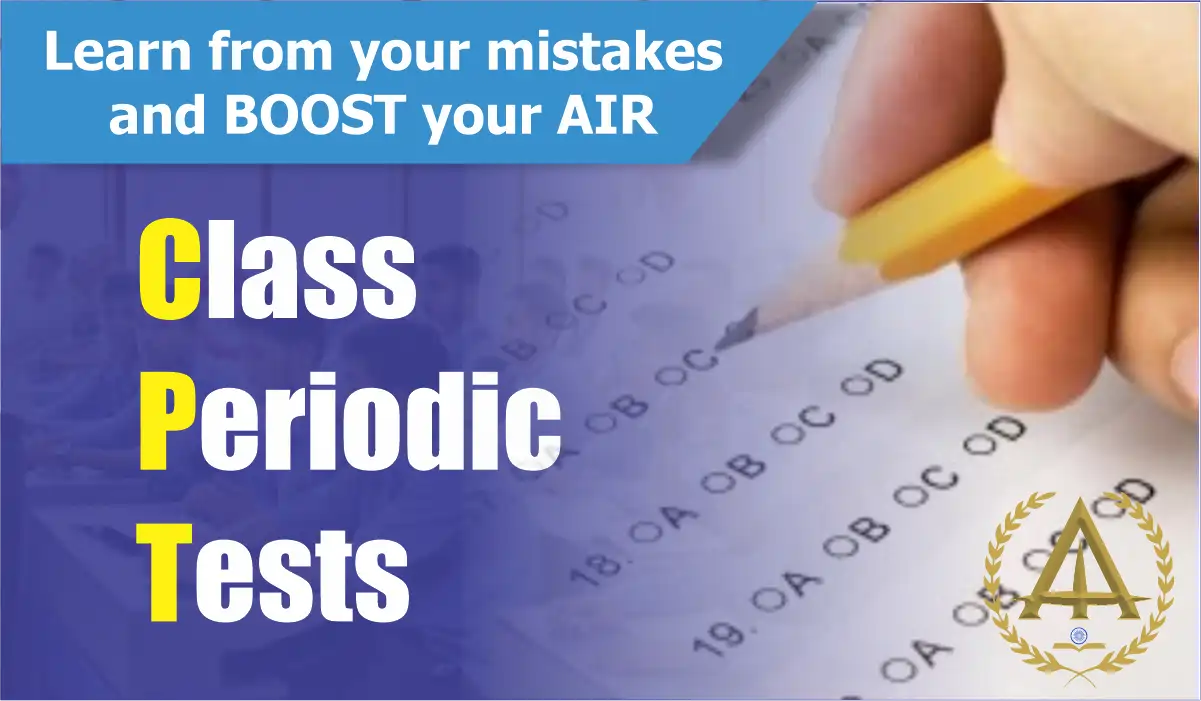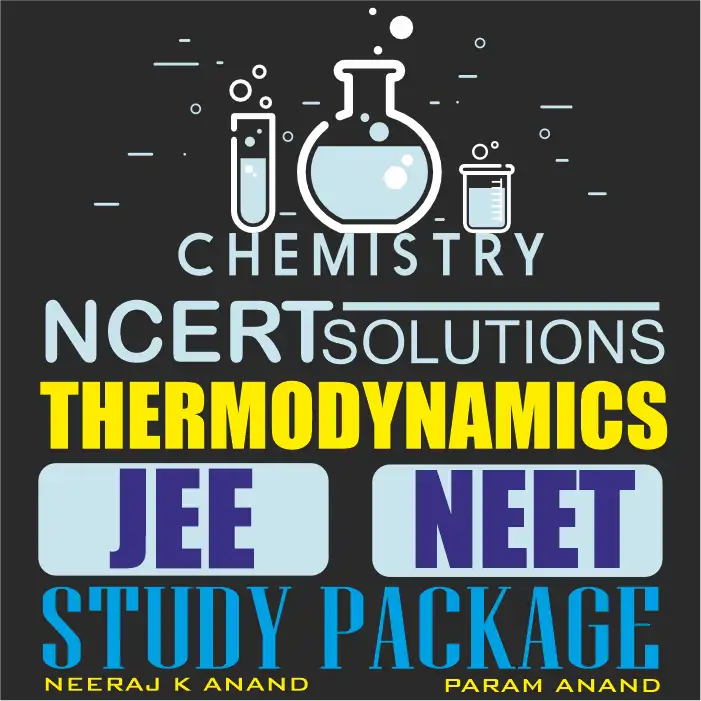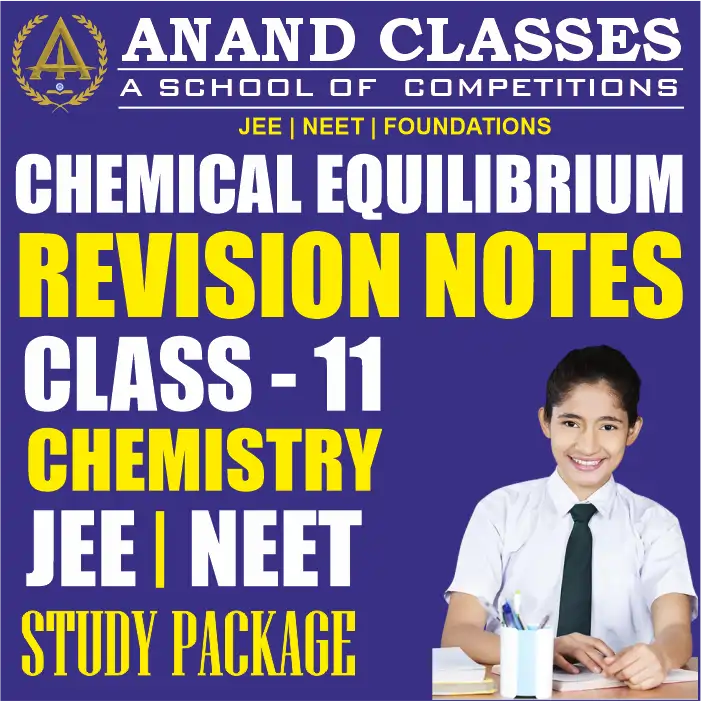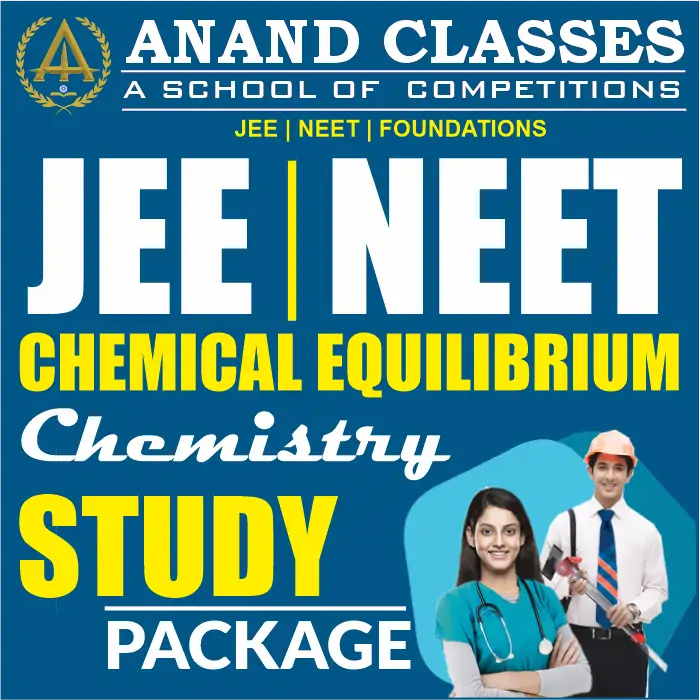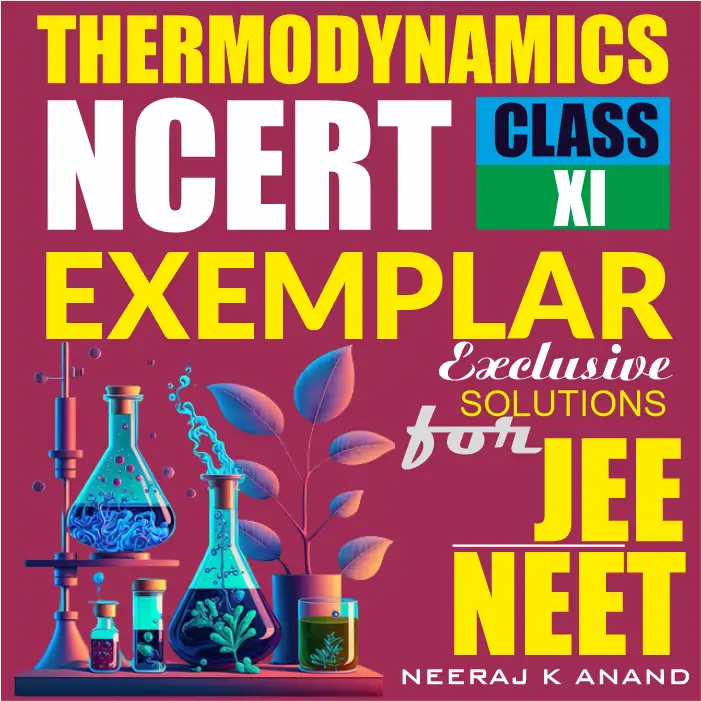Thermodynamics NCERT Solutions Class 11 Chemistry CBSE Study Material free pdf download
The NCERT Solutions for Class 11 Chemistry Chapter 6 Thermodynamics contains a vast collection of questions to practise. By practising these questions of Chapter 5 Thermodynamics, students can strengthen their problem solving skills as well as reasoning skills; these skills can be used in further chapters and real-life problems. These questions of Chapter 5 Thermodynamics can also help students to build a strong foundation for the chapter.
Access NCERT Solutions for Class 11 Chemistry Chapter – Thermodynamics
Access Video Lecture for Class 11 Chemistry Chapter – Thermodynamics
Topics included in NCERT Solutions for Class 11 Chemistry Chapter – Thermodynamics
- Thermodynamic Terms
- The System and the Surroundings
- Types of Thermodynamic Systems
- State of the System
- Internal Energy as a State Function
- Applications
- Work
- Enthalpy, H
- Measurement of ΔU and ΔH: Calorimetry
- Enthalpy Change and Reaction Enthalpy
- Enthalpies for Different Types of Reactions
- Spontaneity
- Gibbs Energy Change and Equilibrium
NCERT Problems of Chapter Thermodynamics
* Note : The Solutions of below problems are above in the pdf file.
Q-1: Choose the correct answer. A thermodynamic state function is a quantity
(i) used to determine heat changes
(ii) whose value is independent of the path
(iii) used to determine pressure-volume work
(iv) whose value depends on temperature only
Q-2: For the process to occur under adiabatic conditions, the correct condition is:
(i) ∆T = 0 (ii) ∆p = 0
(iii) q = 0 (iv) w = 0
Q-3: The enthalpies of all elements in their standard states are:
(i) Unity (ii) Zero
(iii) < 0 (iv) Different for every element
Q-4: ∆U0 of combustion of methane is – X kJ mol–1. The value of ∆H0 is
Q-5: The enthalpy of combustion of methane, graphite and dihydrogen at 298 K are –890.3 kJ mol–1 –393.5 kJ mol–1, and –285.8 kJ mol–1, respectively. Enthalpy of the formation of CH4 (g) will be
(i) -74.8 kJ
(ii) -52.27 kJ
(iii) +74.8 kJ
(iv) +52 kJ
Q-6: A reaction, A + B → C + D + q, is found to have a positive entropy change. The reaction will be
(i) possible at high temperature
(ii) possible only at low temperature
(iii) not possible at any temperature
(iv) possible at any temperature
Q-7: In a process, 701 J of heat is absorbed by a system, and 394 J of work is done by the system. What is the change in internal energy for the process?
Q-8: The reaction of cyanamide, NH2CN(s), with dioxygen was carried out in a bomb calorimeter, and ∆U was found to be –742.7 kJ mol–1 at 298 K. Calculate the enthalpy change for the reaction at 298 K.
NH2CN(g) + 3/2 O2(g) → N2(g) + CO2(g) + H2O(l)
Q-9: Calculate the number of kJ of heat necessary to raise the temperature of 60.0 g of aluminium from 35°C to 55°C. The molar heat capacity of Al is 24 J mol–1 K–1.
Q-10: Calculate the enthalpy change on freezing of 1.0 mol of water at 10.0°C to the ice at –10.0°C. ∆fusH = 6.03 kJ mol–1 at 0°C.
Q-11 Enthalpy of combustion of carbon to CO2 is –393.5 kJ mol–1. Calculate the heat released upon the formation of 35.2 g of CO2 from carbon and dioxygen gas.
Q-12: Enthalpies of formation of CO (g), CO2 (g), N2O (g) and N2O4 (g) are –110, – 393, 81 and 9.7 kJ mol–1, respectively. Find the value of ∆rH for the reaction:
N2O4(g) + 3CO(g) → N2O(g) + 3 CO2(g)
Q-13: Given N2 (g) + 3H2 (g) → 2NH3 (g) ; ∆rH0= –92.4 kJ mol–1
What is the standard enthalpy of the formation of NH3 gas?
Q-14: Calculate the standard enthalpy of formation of CH3OH(l) from the following data:
CH3OH(l) + 3/2 O2(g) → CO2(g) + 2H2O(l);
Q-15: Calculate the enthalpy change for the process
CCl4(g) → C(g) + 4Cl(g) and determine the value of bond enthalpy for C-Cl in CCl4(g).
Q-16: For an isolated system, ∆U = 0, what will be ∆S?
Q-17: For the reaction at 298K,
2A + B → C
At what temperature will the reaction become spontaneous considering to be constant over the temperature range?
Q-18: For the reaction
2Cl(g) → Cl2(g)
What are the signs of ΔS and ΔG ?
Q-19: For the reaction
2A(g) + B(g) → 2D(g)
Calculate
2A(g) + B(g) → 2D(g)
Q-20: The equilibrium constant for a reaction is 10. What will be the value of ∆G0? R = 8.314 JK–1 mol–1, T = 300 K.
Q-21: Comment on the thermodynamic stability of NO(g), given,
(1/2)N2(g) + (1/2)O2(g) → NO(g);
NO(g) + (1/2)O2(g) → NO2(g);
Q-22: Calculate the entropy change in surroundings when 1.00 mol of H2O(l) is formed under standard conditions. ∆f H0= –286 kJ mol–1.
NCERT Solutions for Class 11 Chemistry Chapter 5 Thermodynamics PDF
The Chapter 6 Thermodynamics Chapter 6 Thermodynamics can be a bit confusing if students are not able to understand the concepts properly. For that purpose students need to start practising Chapter 6 Thermodynamics questions from the NCERT textbook. After practising those questions, students can prefer referring to the NCERT Solutions for Class 11 Chemistry Chapter 5 Thermodynamics PDF which is available in the ANAND CLASSES website.
Exercise Wise NCERT Solutions for Class 11 Chemistry Chapter 5 Thermodynamics
In the NCERT Solutions for Class 11 Chemistry Chapter 5 Thermodynamics, a plethora of exercises are given so that students can understand the concepts as well as can solve confusions then and there. By practising exercise wise questions, students can learn to approach different questions of Chapter 5 Thermodynamics in different and creative ways.
Formula wise NCERT Solutions for Class 11 Chemistry Chapter 5 Thermodynamics
The questions in the NCERT Solutions for Class 11 Chemistry Chapter 6 Thermodynamics are arranged according to each and every formula. By practising the questions of Chapter 5 Thermodynamics formula wise, students can become more confident while applying the formulas. By applying the right formulas in the right questions of Chapter 5 Thermodynamics, students can score good marks in those questions.
Features of NCERT Solutions for Class 11 Chemistry Chapter 5 Thermodynamics
The features of NCERT Solutions for Class 11 Chemistry Chapter 5 Thermodynamics is considered to be distinctive trait, some important features are discussed below:
- Based on NCERT Syllabus: The NCERT Solutions for Class 11 Chemistry Chapter 5 Thermodynamics revision are based on the NCERT syllabus so that by referring to it students can have an updated knowledge.
- Different Levels of Questions: In the NCERT Solutions for Class 11 Chemistry Chapter 5 Thermodynamics theory, different levels of questions are asked; that is easy to difficult.
- Hints and Solutionss are Given: In the NCERT Solutions for Class 11 Chemistry Chapter 5 Thermodynamics PDF, hints and Solutionss are given so that students can easily solve all their doubts and confusions.
- All Exercises are Covered: Inside the Class 11 Chapter 6 Thermodynamics Chapter 5 Thermodynamics, all the exercises are covered in the NCERT Solutions; accordingly students can learn to approach in different ways.
- Diagrams are Given: Diagrams are generally considered to be visual representation of the Class 11 Chapter 6 Thermodynamics Chapter 5 Thermodynamics questions and concepts; the same is followed in NCERT Solutions.
- Available in the PDF: The NCERT Solutions for Class 11 Chemistry Chapter 5 Thermodynamics is available in the PDF so that students can access answers whenever they want to.
Frequently Asked Questions on NCERT Solutions for Class 11 Chemistry Chapter 5
What Are the Advantages of Using NCERT Solutions for Class 11 Chemistry Chapter 5 Thermodynamics?
The NCERT Solutions for Class 11 Chemistry Chapter 5 Thermodynamics provides plenty of advantages, some of the advantages are discussed below:
- Improves Performance: By solving questions in the NCERT Solutions for Class 11 Chemistry Chapter 5 Thermodynamics revision, students can improve their problem solving skills and can increase the chances of getting good marks in the test. The Solutions helps students understand the concepts of Chapter 5 Thermodynamics as well as questions effectively and efficiently.
- Builds Confidence: By solving questions from NCERT Solutions for Class 11 Chemistry Chapter 6 Thermodynamics revision, students can build their confidence as it provides a variety of questions. Being confident while attempting Chapter 6 Thermodynamics Chapter 5 Thermodynamics questions can help one to get right and accurate answers.
- Enhances the Learning Process: By using the NCERT Solutions for Class 11 Chemistry Chapter 5 Thermodynamics theory, students can enhance their learning process and can reinforce the learning strategies.
- Saves Time and Effort: Students don’t need to search for answers as it is already available in the NCERT Solutions for Class 11 Chemistry Chapter 5 Thermodynamics PDF as it saves both time and effort of students.
- Easy to Understand: As the answers of Class 11 Chemistry Chapter 5 Thermodynamics are very simple this makes students understand all levels of questions easily.
- Helps to Maintain Accuracy: Accuracy is considered to be the freedom from making mistakes; students can maintain the accuracy level by solving Class 11 Chemistry Chapter 5 Thermodynamics questions from NCERT Solutions.
Is NCERT Solutions for Class 11 Chemistry Chapter 5 Thermodynamics Right for Students?
The NCERT Solutions for Class 11 Chemistry Chapter 5 Thermodynamics is right for students as it is arranged according to the latest syllabus,some of the key factors are discussed below:
- To Understand Concepts: The NCERT Solutions for Class 11 Chemistry Chapter 5 Thermodynamics revision is considered to be the right one as it allows students to understand the concepts easily.
- Comprehensive Coverage: The topics are covered in a comprehensive way in the NCERT Solutions for Class 11 Chemistry Chapter 5 Thermodynamics theory so it is right for students to refer.
- Reliable: Students can be dependent on the NCERT Solutions for Class 11 Chemistry Chapter 6 Thermodynamics PDF as the questions and answers are accurate and reliable. Accordingly, students don’t need to check for the right answers of Chapter 5 Thermodynamics questions from other reference materials.
- Improves Problem Solving Skills: It is a skill in which students tend to look up to questions of Chapter 6 Thermodynamics Chapter 5 Thermodynamics in a logical way and solve those questions in a logical way. So to improve problem solving skills while attempting questions of Chapter 5 Thermodynamics, students can refer to the NCERT Solutions of Class 11 Chemistry.
- Follows the Latest Syllabus: The Chapter 5 Thermodynamics questions in the NCERT Solutions Class 11 Chemistry follows the latest syllabus so it is right for students to choose it.
- Can Solve Questions with Ease: Students can choose the NCERT Solutions for Class 11 Chemistry so that they can solve the Chapter 5 Thermodynamics questions with ease.
When Is the Best Time to Use NCERT Solutions for Class 11 Chemistry Chapter 5 Thermodynamics?
The NCERT Solutions for Class 11 Chemistry Chapter 5 Thermodynamics can be used at any time while preparing; but is it better to follow the given tips:
- After Completing the Chapter: Students can prefer utilising the NCERT Solutions for Class 11 Chemistry Chapter 6 Thermodynamics revision after completing the chapter thoroughly.
- To Identify Gaps in Knowledge: It is advisable for students to utilise the NCERT Solutions for Class 11 Chemistry Chapter 5 Thermodynamics theory if they want to identify the gaps in their knowledge. After identification of gaps, students can also eliminate those gaps by solving the Chapter 6 Thermodynamics questions on a regular basis.
- To Verify the Answers: Once students have attempted the questions of Chapter 5 Thermodynamics Chapter 5 Thermodynamics then they can prefer utilising the NCERT Solutions so that they can match their own answers.
- To Practise More Questions: If students want to practise more questions on Chapter 5 Thermodynamics Chapter 5 Thermodynamics then they can prefer using the NCERT Solutions for Class 11 Chemistry. By practising more Chapter 6 Thermodynamics questions, students can easily enhance their problem solving skills.
- To Revise: The NCERT Solutions for Class 11 Chemistry Chapter 6 Thermodynamics PDF can be utilised as good study material as through it, students can easily revise the topics and concepts.
- To Build Strong Foundation: If students want to build a strong foundation for the Chapter 5 Thermodynamics Chapter 6 Thermodynamics, then they can prefer to utilise the NCERT Solutions for Class 11 Chemistry. By building a strong foundation, students can score good marks in questions related to Chapter 5 Thermodynamics.
What are the Challenges Faced While Referring to the NCERT Solutions for Class 11 Chemistry Chapter 5 Thermodynamics?
While referring to the NCERT Solutions for Class 11 Chemistry Chapter 6 Thermodynamics, students may face challenges, those challenges are discussed below:
- Lack of Understanding: Students may struggle to understand the NCERT Solutions for Class 11 Chemistry Chapter 5 Thermodynamics revision if they don’t have a clear understanding of the concepts and topics. In this case, students need to have a clear understanding of the Chapter 6 Thermodynamics concepts.
- Lengthy Solutionss: Some answers in the NCERT Solutions for Class 11 Chemistry Chapter 5 Thermodynamics theory can be lengthy so in this case students may face difficulty in understanding the Solutions. To overcome this, students can break the answers of Chapter 6 Thermodynamics questions into smaller parts.
- Technical Language: If the NCERT Solutions for Class 11 Chemistry Chapter 5 Thermodynamics PDF contains any kind of technical language then some students may face difficulty in understanding those words.
- Lack of Visual Aids: If there are not enough visual diagrams of Chapter 5 Thermodynamics Chapter 5 Thermodynamics questions, then they may face difficulty in understanding the NCERT Class 11 Chemistry Solutionss. To overcome this, students may refer to the ANAND CLASSES website as there are enough visual diagrams related to Chapter 5 Thermodynamics .
- Limited Scope: The NCERT Solutionss for Class 11 Chemistry provides a limited number of Chapter 5 Thermodynamics questions to solve; for this students need to refer to other study materials which can be available on the website.
- Inadequate Explanations: Some answers of Chapter 5 Thermodynamics Chapter 6 Thermodynamics may not provide adequate explanations in the NCERT Solutionss; so in this case students may face difficulty understanding the questions.
About ANAND CLASSES NCERT Solutions
The NCERT Solutions for Class 11 Chemistry Chapter 5 provided on this page contains all the intext and exercise questions listed in Chapter 5 of the NCERT Chemistry textbook for Class 11. It, therefore, covers many important questions that could be asked in the annual examinations.
Furthermore, detailed explanations are provided for every solution by the subject-matter experts at ANAND CLASSES. This makes the NCERT Solutions provided by ANAND CLASSES very student-friendly and concept-focused. These NCERT Solutions for Class 11 Chemistry can help students develop a strong foundational base for all the important concepts included in the CBSE syllabus of both Class 11 as well as competitive exams. Also, in cases where students face difficulty while going through the NCERT Class 11 Chemistry Solutions, the ANAND CLASSES support team is always available to clear their doubts.
To know more about the difference between system and surrounding, the difference between closed, open and isolated systems, internal energy, heat, work, the first law of thermodynamics, calculation of energy change, the correlation between ∆U and ∆H, Hess’s law, extensive and intensive properties, and ∆G, register with ANAND CLASSES now!.
How are NCERT Solutions for Class 11 Chemistry Chapter 5 Thermodynamics helpful for final annual exam preparation?
What is thermodynamics according to NCERT Solutions for Class 11 Chemistry Chapter 5?
Are the NCERT Solutions for Class 11 Chemistry Chapter 5 at ANAND CLASSES provide answers to all questions present in the NCERT textbook?
JEE NEET Physics Chemistry Math Science Jalandhar Coaching Tuition Center Classes near me in Jalandhar
ANAND CLASSES offers IIT-JEE (Main & Advanced) & NEET Exams Coaching Center in Urban Estate Phase-II Jalandhar. ANAND CLASSES is the prevalent establishment in the Jalandhar for IIT-JEE (Main & Advanced) & NEET Exams. It is surely famous for its selective class management classes and productive Best IIT-JEE (Main & Advanced) & NEET Exams Coaching institute in Jalandhar.
Best Coaching Center for NEET near me in Jalandhar
The faculty at ANAND CLASSES is highly qualified and vastly experienced in successfully coaching students for IIT-JEE (Main & Advanced) & NEET Exams.
Best NEET Coaching Institute In Jalandhar
NEET Coaching near me
ANAND CLASSES pioneered itself as the best coaching institute for the preparation of IIT JEE (Main + Advanced). We provide systematic coaching and competitive environment to the JEE (Main + Advanced) aspirants with an outstanding preparation capability and infrastructure facilities, which has made it to the first choice of the students. We have a team of highly qualified and competent faculties dedicated towards the students’ performance and provide quality education to the students.







